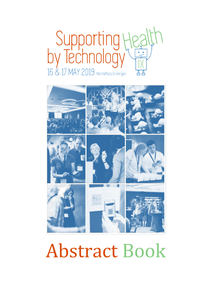Abstract Aims: Medical case vignettes play a crucial role in medical education, yet they often fail to authentically represent diverse patients. Moreover, these vignettes tend to oversimplify the complex relationship between patient characteristics and medical conditions, leading to biased and potentially harmful perspectives among students. Displaying aspects of patient diversity, such as ethnicity, in written cases proves challenging. Additionally, creating these cases places a significant burden on teachers in terms of labour and time. Our objective is to explore the potential of artificial intelligence (AI)-assisted computer-generated clinical cases to expedite case creation and enhance diversity, along with AI-generated patient photographs for more lifelike portrayal. Methods: In this study, we employed ChatGPT (OpenAI, GPT 3.5) to develop diverse and inclusive medical case vignettes. We evaluated various approaches and identified a set of eight consecutive prompts that can be readily customized to accommodate local contexts and specific assignments. To enhance visual representation, we utilized Adobe Firefly beta for image generation. Results: Using the described prompts, we consistently generated cases for various assignments, producing sets of 30 cases at a time. We ensured the inclusion of mandatory checks and formatting, completing the process within approximately 60 min per set. Conclusions: Our approach significantly accelerated case creation and improved diversity, although prioritizing maximum diversity compromised representativeness to some extent. While the optimized prompts are easily reusable, the process itself demands computer skills not all educators possess. To address this, we aim to share all created patients as open educational resources, empowering educators to create cases independently.

Occupational stress can cause all kinds of health problems. Resilience interventions that help employees deal with and adapt to adverse events can prevent these negative consequences. Due to advances in sensor technology and smartphone applications, relatively unobtrusive self-monitoring of resilience-related outcomes is possible. With models that can recognize intra-individual changes in these outcomes and relate them to causal factors within the employee’s own context, an automated resilience intervention that gives personalized, just-in-time feedback can be developed. The Wearables and app-based resilience Modelling in employees (WearMe) project aims to develop such models. A cyclical conceptual framework based on existing theories of stress and resilience is presented, as the basis for the WearMe project. The included concepts are operationalized and measured using sleep tracking (Fitbit Charge 2), heart rate variability measurements (Elite HRV + Polar H7) and Ecological Momentary Assessment (mobile app), administered in the morning (7 questions) and evening (12 questions). The first (ongoing) study within the WearMe project investigates the feasibility of the developed measurement cycle and explores the development of such models in social studies students that are on their first major internship. Analyses will target the development of both within-subject (n=1) models, as well as between-subjects models. The first results will be shared at the Health By Tech 2019 conference in Groningen. If successful, future work will focus on further developing these models and eventually exploring the effectiveness of the envisioned personalized resilience system.

The relationship between race and biology is complex. In contemporary medical science, race is a social construct that is measured via self-identification of study participants. But even though race has no biological essence, it is often used as variable in medical guidelines (e.g., treatment recommendations specific for Black people with hypertension). Such recommendations are based on clinical trials in which there was a significant correlation between self-identified race and actual, but often unmeasured, health-related factors such as (pharmaco) genetics, diet, sun exposure, etc. Many teachers are insufficiently aware of this complexity. In their classes, they (unintentionally) portray self-reported race as having a biological essence. This may cause students to see people of shared race as biologically or genetically homogeneous, and believe that race-based recommendations are true for all individuals (rather than reflecting the average of a heterogeneous group). This medicalizes race and reinforces already existing healthcare disparities. Moreover, students may fail to learn that the relation between race and health is easily biased by factors such as socioeconomic status, racism, ancestry, and environment and that this limits the generalizability of race-based recommendations. We observed that the clinical case vignettes that we use in our teaching contain many stereotypes and biases, and do not generally reflect the diversity of actual patients. This guide, written by clinical pharmacology and therapeutics teachers, aims to help our colleagues and teachers in other health professions to reflect on and improve our teaching on race-based medical guidelines and to make our clinical case vignettes more inclusive and diverse.
MULTIFILE
